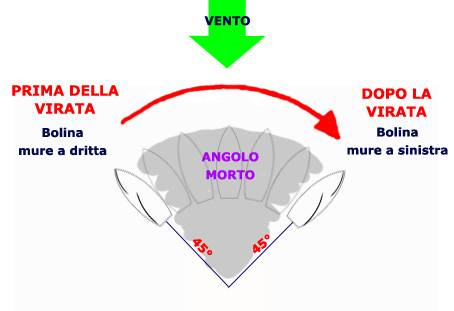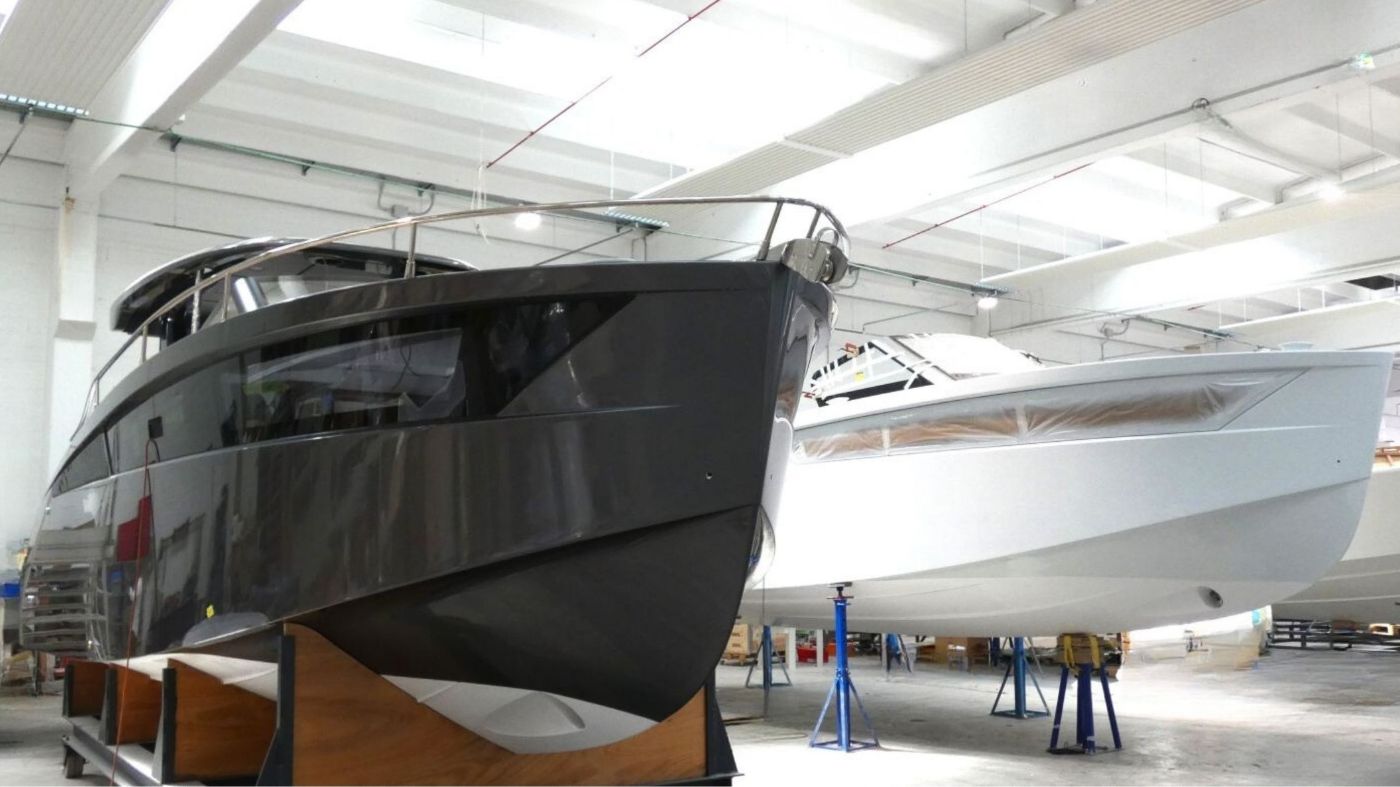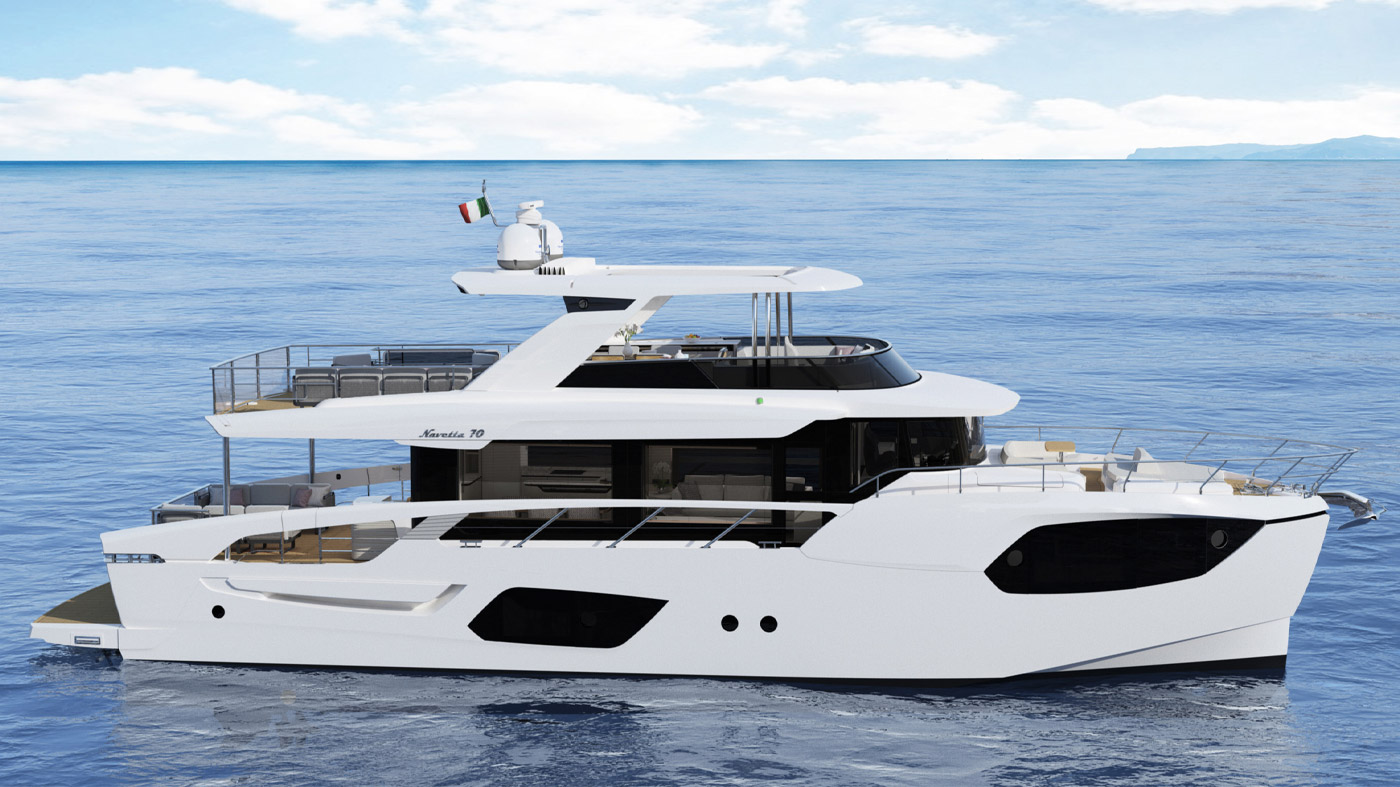“Pronti a virare?” “Pronti”. “Virooo”
Quasi che fosse un rito, gli istanti prima della virata si riempiono delle stesse frasi da sempre. In realtà, quando si manovra in equipaggio, si tratta di frasi essenziali, in modo che tutti sappiano cosa fare al momento giusto.
La virata è una delle manovre base, una delle prime che si imparano nei corsi di primo livello in ogni scuola di vela. In sostanza si tratta di passare da un bordo di bolina all’altro attraversando l’angolo morto, quello spazio angolare in cui la barca non ha propulsione perchè si trova con la prua nel vento.
Una manovra semplice? Sì, almeno quasi sempre, ma che può offrire qualche difficoltà quando, come sempre accade, non se ne avrebbe proprio bisogno.
Riassumendo molto brevemente, per eseguire la manovra a regola d’arte ci si porta a un’andatura di bolina, la più stretta possibile, si avverte l’equipaggio con il richiamo alla voce “Pronti a Virare” e quando l’equipaggio è pronto si porta la barra all’orza entrando nel letto del vento. Quando il fiocco fileggia il tailer che era sottovento molla tutto e quello sulla mura opposta cazza.
Tutto molto chiaro e semplice eppure qualche volta la virata non riesce o riesce con difficoltà. Ad esempio quando il vento è molto leggero. In questo caso, soprattutto se siamo su una barca non troppo pesante, l’unica possibilità che abbiamo è quella di farci aiutare dal peso dell’equipaggio.
Nella fase inziale l’equipaggio sbanda la barca sottovento in modo da agevolare l’andata all’orza dello scafo.
Quando la vela di prua inzia a rifiutare l’equipaggio sposta il peso verso il centro in modo da far riprendere alla barca un assetto corretto e quando il boma è passato sulle nuove mure, l’equipaggio può disporsi correttamente sopravento.
Ci possono essere però situazioni in cui le difficoltà sono maggiori, come ad esempio quando si deve contrastare un moto ondoso forte, oppure quando si sommano una serie di errori da parte del timoniere o dell’equipaggio. In questi casi la possibilità che la virata non riesca aumentano.
Gli errori più comuni sono ad esempio la scarsa velocità data alla barca all’inzio della manovra, essere partiti con poco abbrivio e già con la prua nel vento, fiocco mollato troppo presto rinunciando così a un bel po’ di potenza a prua, azione indecisa del timoniere o, al contrario, azione troppo brusca, che, soprattutto con vento leggero, trasforma la pala del timone in un freno.
Che fare in questi casi?
Se la virata è stata abortita per mancanza di velocità, occorre poggiare, cazzare di nuovo il fiocco, aprire un po’ di randa per dare un po’ di velocità e ripetere, con più attenazione, la manovra.
Se la virata si ferma quando siamo già con la prua al vento, possiamo agire sulla scotta del fiocco trattenendola e mandando il fiocco a collo che aiuterà la barca a poggiare sulle nuove mure. Anche in questo caso, il peso dell’equipaggio può aiutare lo spostamento della barca sbandandola dalla parte opposta rispetto a quella verso la quale vogliamo portare la prua.
Ma attenzione, con il fiocco a collo si può avere una azione negativa del vento che può addirittura far indietreggiare la barca. Quindi una volta eseguita la virata si deve subito mollare la scotta e cazzare l’altra sull’altra mura.
Infine, di fronte a un moto ondoso forte, l’unica possibilità è quella di avere una buona velocità e, se necessario, inziare la manovra un po’ più poggiati del neccessario per imprimere maggiore velocità alla virata. A parte i casi in cui virare non è proprio possibile. In questi casi è certo che ci saremo già accorti in precedenza che anche la bolina è diventata troppo dura e probabilmente staremo già fuggendo la burrasca augurandoci di avere molta acqua sottovento.











